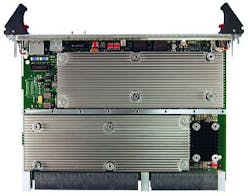Mortar Fire Control System (MFCS) components to come from MFCS prime EFW Inc. in $6.9 million deal
The MFCS has components that include a commander's interface that links system components, performs ballistic calculations, and acts as a mortar ballistic computer; pointing device that enables the mortar to determine its own position; gunner's display that helps mortar crews point the tube for accurate firing; and a driver's display that helps mortar crews traveling in vehicles to drive toward targets when the crew receives a call for fire.
The idea behind the MFCS is to enable self-propelled 120-millimeter mortar crews to fire within a minute of receiving fire orders with accuracy within 200 feet at the mortar's maximum range. Digital radio networks enable the MFCS to communicate with the Army's Advanced Field Artillery Tactical Data System (AFATDS).
For more information contact EFW Inc. online at www.efw.com, or the Army's Picatinny Arsenal at www.pica.army.mil.
